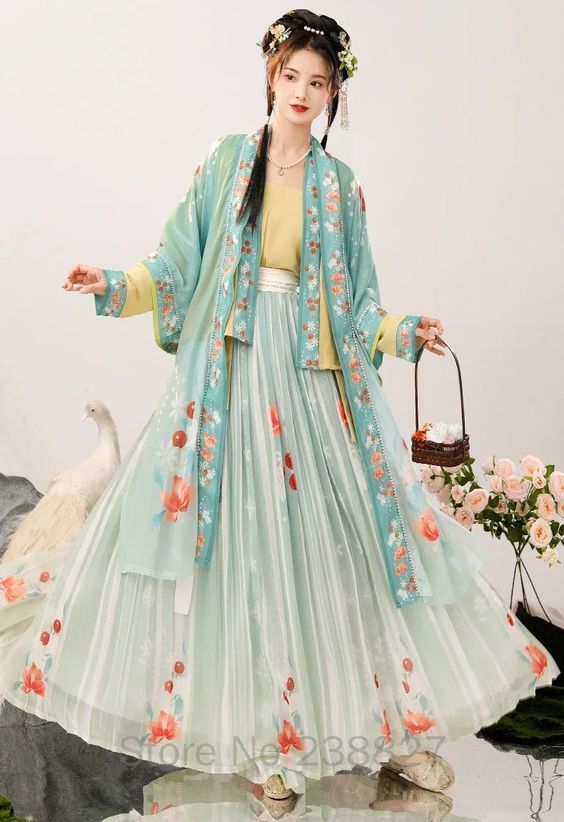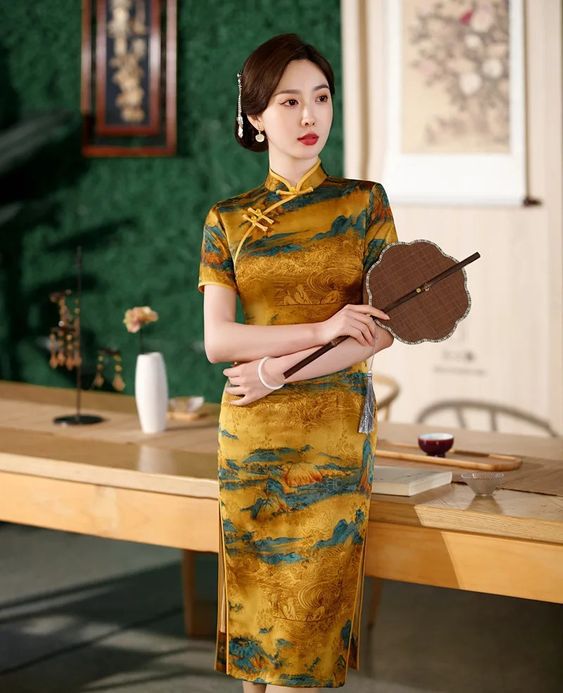Hanfu et cheongsam, two distinct garments with rich cultural significance, have often been conflated due to superficial similarities. However, a closer examination reveals their unique origins, designs, and historical contexts.
Hanfu
Hanfu, the traditional attire of the Han Chinese, emerged during the Han dynasty (206 BCE – 220 CE). It is characterized by its loose-fitting silhouette, flowing sleeves, and intricate embroidery. Hanfu was worn by both men and women, with variations in style and ornamentation depending on social status and occasion.

Characteristics:
- Loose-fitting silhouette
- Flowing sleeves
- Intricate embroidery
- Typically made from silk or cotton
- Adorned with traditional Chinese motifs (dragons, phoenixes, flowers)
Cheongsam
In contrast, the cheongsam, also known as the qipao, originated in the early 20th century as a modernized version of the Manchu women’s robe. It features a form-fitting design, high collar, and side slits. The cheongsam gained popularity among urban women in China and Southeast Asia, becoming a symbol of modernity and sophistication.

Characteristics:
- Form-fitting design
- High collar
- Side slits
- Souvent en soie ou en satin
- Decorated with floral or geometric patterns
Importance culturelle
While both hanfu and cheongsam share certain elements, such as the use of silk and embroidery, their overall designs and cultural significance are vastly different.
- Hanfu represents the traditional values and aesthetics of ancient China, reflecting the cultural and social customs of the Han people. It is often worn during festivals, ceremonies, and other special occasions.
- Cheongsam embodies the influence of Western fashion and the changing social norms of the early 20th century. It has become an iconic representation of modern Chinese fashion and is often worn as a formal dress or as a symbol of Chinese heritage.

Historical Context
The historical contexts in which these garments were worn provide further insight into their distinct identities:
- Hanfu was the dominant attire in China for centuries, reflecting the cultural and social customs of the Han people.
- Cheongsam emerged during a period of significant social and political change, symbolizing the transition from traditional to modern China.

Moderne Interpretations
Is Hanfu a Cheongsam?
Despite their shared cultural heritage, hanfu and cheongsam are distinct garments with unique histories and characteristics.
- Hanfu is characterized by its loose, flowing silhouette, wide sleeves, and intricate embroidery. It was worn by people of all social classes and is considered a symbol of Chinese culture and identity.
- Cheongsam emerged as a modernized version of the traditional Manchu qipao. It is form-fitting with a high collar, side slits, and intricate detailing, and has become associated with elegance and sophistication.
In recent years, both hanfu and cheongsam have seen a resurgence in interest, particularly among young people. Modern interpretations of these garments blend traditional elements with contemporary designs, experimenting with new fabrics, colors, and patterns while respecting their cultural heritage.
